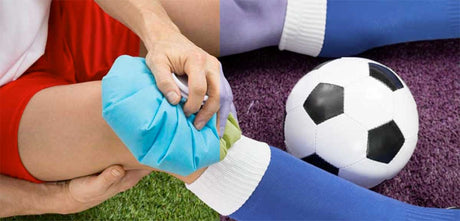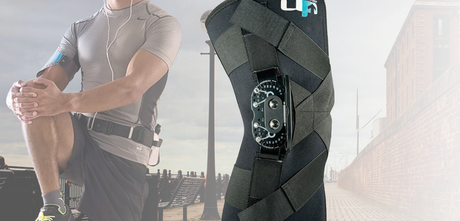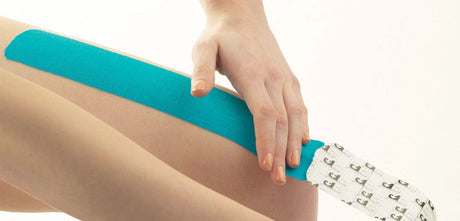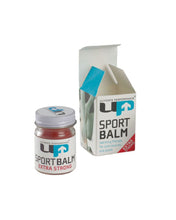Knee pain is one of the most common complaints among athletes and active individuals. Often some simple taping techiques can help relieve pain and aid recovery. Here we outline some common injuries which benefit from sports taping.
Patellofemoral Pain Syndrome (Runner’s Knee)

Play video on Sportsinjuryclinic.net
Patellofemoral pain occurs when the kneecap doesn’t track properly over the femur, leading to pain at the front of the knee.
AIm: To improve patellar tracking and reduce pressure under the kneecap.
Technique: Often known as the McConnell taping; apply a base of Light Fix tape then strips of high quality non-stretch zinc oxide tape to glide and/or rotate the patella into alignment. This instantly reduces irritation and helps with pain during squatting or running.
Sports tape needed:
- Light fix tape as a base against the skin.
- Zinc oxide tape 2.5cm or 3.8cm (Tan tape is best).
Patellar Tendonitis (Jumper’s Knee)

This condition involves inflammation or degeneration of the patellar tendon, often from repetitive jumping or sprinting.
Aim: To offload stress on the tendon and support healing.
Technique: A strip of rigid or kinesiology tape placed horizontally just below the kneecap acts like a tendon strap, reducing tension on the patellar tendon during activity.
Tape needed:
- Light fix tape as a base or anchor.
-
Zinc oxide tape 2.5cm
Iliotibial Band (ITB) Syndrome

ITB syndrome causes pain on the outer side of the knee, usually from friction where the IT band crosses the femur.
Aim: To reduce tension through the IT band and correct lower limb alignment.
Technique: Kinesiology tape is applied along the IT band from the hip to just below the knee, sometimes combined with a decompression strip over the painful area.
Sports tape needed:
Osgood-Schlatter Disease
Common in adolescents, this condition involves pain and swelling at the bump below the kneecap (the tibial tuberosity).
Aim: To relieve pulling forces from the patellar tendon on the tibial growth plate.
Technique: A patellar tendon offload taping or strap below the knee can help reduce strain during running or jumping.
Tape needed:
- Light fix tape as a base or anchor.
- Zinc oxide tape 2.5cm
Ligament Sprains (MCL, LCL, ACL, PCL)

Ligament sprains range from mild overstretching to partial tears.
Aim: To provide stability and limit excessive movement.
Technique: Rigid taping is used to reinforce the joint in the direction of weakness — for example, medial support for an MCL sprain. Kinesiology tape can also be used for lighter support and proprioceptive feedback during rehabilitation.
Tape needed:
- EAB 5cm for anchors.
- Zinc oxide tape 2.5cm or 3.8cm depending on knee size.
Final Thoughts
Sports taping doesn’t replace proper diagnosis, exercise therapy, or rest — but it can be an effective short-term tool to manage pain and support function. For best results, taping should be applied by a physiotherapist or trained professional who can tailor the technique to the individual’s anatomy and sport.











